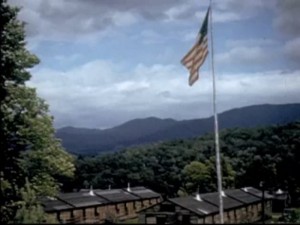"An impressionistic look at the sights of Venice from morning until evening." (EAFA Database)
a sogg. lungh. norm."/feature-length fiction
Documentary
"a soggetto"/fiction

"Filmed in color during the war years of 1941-1944, this silent film shows the Vermont State Guard holding muster at the Tunbridge Fairgrounds and at Camp Wills, which later became Camp Johnson in Colchester, Vermont. The film also shows a bond rally on the steps of the Statehouse in Montpelier, and maneuvers at the airfield in Berlin, Vermont, and at a camp in Moscow, Vermont. The State Guard began as Company H, 1st Regiment, Infantry in 1941 and was re-organized in 1943 as Company H, 2d Battalion. This film is an important documentation of the State Guard's early history and Vermont's home front activities during World War II. Although silent, intertitles are inserted with an explanation of the scenes to follow, as well as scrolling text of explanation at the beginning and end of the film." Vermont Historical Society.
"documentario"/documentary
"the story of a man who attempts to get to the moon in an aeroplane. This took three months to complete as it entailed a lot of model work" (HMHT 1933: 79).
"doc. a fantasia"/avant-garde documentary
Total Pages: 299